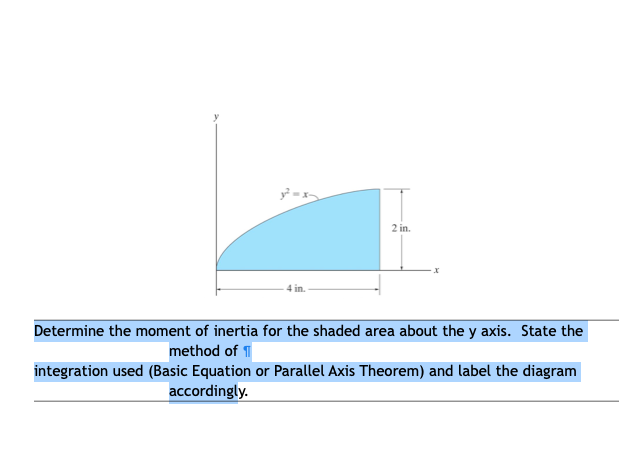

We discussed regarding the expression of moment of inertia in the first section, applying it to a small section dx of the rod, at a distance x from the mid point O, we have it as = Mass × x2 = (m.dx)x2 dxįor calculating the moment of inertia of the entire rod, we integrate the above expression across the whole length, i.e. Let the total mass of the rod be equal to M and m the mass per unit length of the rod. Looking at the figure, consider the rod AB with O as its mid point and length 2l. Moment of Inertia about the central axis, at right angles to the length of the rod: Two conditions may be considered with this: To find the moment of inertia of the entire section, we integrate the above expression and get,Ĭalculating Moment of Inertia of a Uniform Thin Rod Now, the moment of inertia as discussed in the previous section for the above strip about the Y-Y axis is = dA × x2. Y = Distance of the center of gravity of the strip over the Y-Y axis. X = Distance of the center of gravity of the strip over the X-X axis and, The area is divided into a number of narrow strips and one of the lengths is considered for the calculations. Referring the figure, we see a flat surface whose moment of inertia is needed to be calculated about its X-X and Y-Y axis. Calculating Moment of Inertia Through the Method of Integration I = / 5 (for bodies which are spherical in shape).Īnd S = Sum of the squares of the couple of semi axes, barring the one about which the moment of inertia is being calculated. Routh’s Rule states that if a body is symmetrically shaped about all its three axes, then the moment of inertia about any of its three axes which passes through the center of gravity of the body can be written as: With the Integration Method Calculating Moment of Inertia Using Routh’s Rule The moment of inertia of a mass of a body (with area) can be calculated by using either of the two methods: If the perpendicular distance between the line of action and the point of action is again multiplied by the above moment, then we get what is known as the moment of inertia = P.x2 The above moment is called the first moment of force. The principle directions determine the best way to orient a beam to for maximum stiffness, and how much asymmetrical beams, like channels and angles, will twist when a load is applied.Moment of inertia is also termed second moment of force or “moment of moment of force.” The term can be understood by first learning the definition of moment of force.Ĭonsidering a force “x” about a point, moment of force may be defined as the product of the force and the distance measured perpendicularly between the point of action and the line of action of the force = P.x

When the coordinate axes are oriented in the principle directions, the centroidal moments of inertia are maximum about one axis and minimum about the other, but neither is necessarily zero.

If the product of inertia is not zero it is always possible to rotate the coordinate system until it is, in which case the new coordinate axes are called the principle axes. The product of inertia will be zero for symmetrical objects when a coordinate axis is also an axis of symmetry.

Unlike the rectangular moments of inertia, which are always positive, the product of inertia may be either positive, negative, or zero, depending on the object's shape and the orientation of the coordinate axes.


 0 kommentar(er)
0 kommentar(er)
